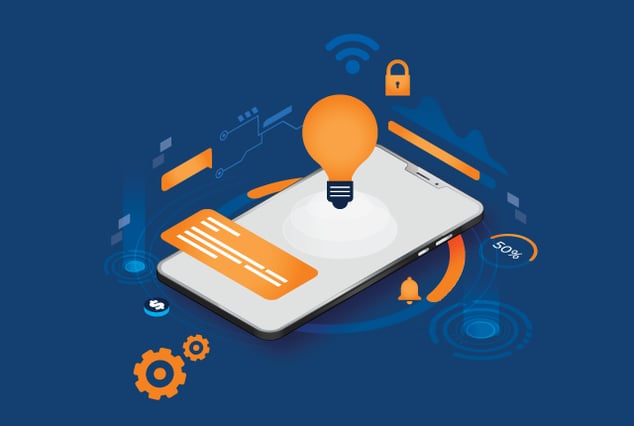
In today's rapidly evolving business landscape, organizations rely heavily on SAP mobile applications to streamline processes and enhance productivity. According to a recent report by Thrive My Way, 77% of the world’s transaction revenue goes through an SAP system. However, with the increasing complexity of these applications and the diverse range of devices, operating systems, and network configurations, ensuring optimal performance and functionality becomes a challenge.
The need for comprehensive SAP mobile app testing has never been more critical, as businesses strive to deliver exceptional user experiences and maintain a competitive edge. This blog discusses various types of SAP testing services. It also provides some best practices that should be followed to ensure the successful testing of SAP mobile applications.
Understanding SAP Mobile Apps
Before we begin testing SAP mobile applications, it is critical to first understand what are the applications of sap apps. SAP mobile applications are intended to provide mobile access to SAP's enterprise resource planning (ERP) and customer relationship management (CRM) solutions. These applications are designed to help workers get fast and simple access to key data and insights by streamlining company operations.
SAP mobile applications are classified into three categories. They are as follows:-
- SAP ERP mobile applications: These kinds of apps provide access to different SAP ERP systems operations such as inventory management, financial management, and procurement.
- SAP CRM mobile applications: These apps enable access to different SAP CRM systems operations such as sales, service, and marketing.
- Mobile applications for SAP Business Suite: These applications provide access to a variety of functions across various SAP Business Suite modules.
Types of Testing for SAP Mobile Applications
To ensure that SAP mobile applications work as intended, testing them needs a methodical process. Here are some important aspects to bear in mind while evaluating SAP mobile apps:
- Mobile device compatibility: SAP mobile apps should be tested on a wide range of mobile devices to ensure that the app works properly on different screen sizes and resolutions, operating systems, and hardware configurations. Compatibility testing can help identify issues such as font size or layout problems that could affect the user experience on specific devices.
- Performance testing: Performance testing should cover various scenarios, such as heavy user loads, network connectivity issues, and memory constraints. This type of testing helps identify performance issues, such as slow response times or crashes,that could impact the user experience or cause data loss.
- Security testing: This type of testing should cover all aspects of the app, including data encryption, user authentication, and network security. This type of testing can help identify vulnerabilities, such as weak passwords or data leaks, that could compromise sensitive information and damage the organization's reputation.
- User interface testing: User interface testing should evaluate the app's navigation, controls, and visual design. This type of testing can help identify usability issues, such as hard-to-find features or unclear instructions, that could frustrate users and lead to low adoption rates.
- Integration testing: Integration testing should cover all the interfaces between the app and other systems, including APIs, databases, and middleware. This type of testing helps identify integration issues, such as data mismatches or communication failures, that could lead to data loss or system downtime.
- Functional testing: Functional testing should cover all the features and functions of the app, including input validation, data processing, and error handling. This type of testing can help identify functional issues, such as incorrect calculations or incorrect output, that could impact the app's usability and reliability.
- Accessibility testing: Accessibility testing should cover all aspects of the app that affect users with disabilities, including screen readers, text-to-speech, and color contrast. This type of testing can help identify accessibility issues, such as a lack of alternative text or inadequate color contrast, that could exclude users with disabilities from accessing the app's content or features.
Best Practices for Testing SAP Mobile Apps
Let us now look at some of the best practices that you must follow while implementing the SAP test strategy:
- Create a thorough testing plan: A complete testing plan should be created that outlines the testing process, including the types of testing that will be performed, the testing environments that will be used, the testing tools that will be utilized, and the acceptance criteria. The plan should be comprehensive and should cover all aspects of the SAP mobile app, including functionality, user interface, performance, security, and usability.
- Test often and early: Testing should begin as early as possible in the development process to catch defects and issues early on. The testing process should be continuous and iterative, with testing performed at each stage of the development lifecycle. Early and frequent testing can help reduce the risk of defects and improve the overall quality of the SAP mobile app.
- SAP test automation: SAP testing automation tools and technologies should be used to help streamline the testing process and ensure that tests are performed consistently. Automation can help reduce the time and effort required for testing, as well as increase the accuracy and reliability of the tests. Automation can also help ensure that the same tests are performed every time, which is critical for consistency and repeatability.
- Real-world testing: Real-world testing should be performed to imitate actual user scenarios and ensure that the SAP mobile app works flawlessly in a variety of contexts. This may include testing in different network conditions, device configurations, and locations. Real-world testing can help identify issues and defects that may not be apparent in a controlled testing environment.
- Collaborate with stakeholders: Collaboration with stakeholders, such as developers, testers, and end-users, is critical to ensure that the SAP mobile app satisfies all criteria. This may include involving stakeholders in the testing process, soliciting feedback, and incorporating their suggestions into the development process. Collaboration can help ensure that the SAP mobile app meets the needs and expectations of all stakeholders.
- Incorporate feedback: Feedback from end-users and other stakeholders should be solicited and incorporated into the testing process. This can help identify any problems or areas that need improvement and ensure that the SAP mobile app is meeting the needs of its users. Incorporating feedback can also help improve the user experience and overall quality of the SAP mobile app.
Conclusion
Proper testing is crucial to ensure that SAP mobile applications function correctly and provide benefits to organizations. By following the best practices mentioned above, SAP mobile apps can operate seamlessly and meet all requirements. QASource is a professional software testing company that provides expert support to thoroughly test SAP mobile applications. Visit QASource now to get further information about the testing services offered.



